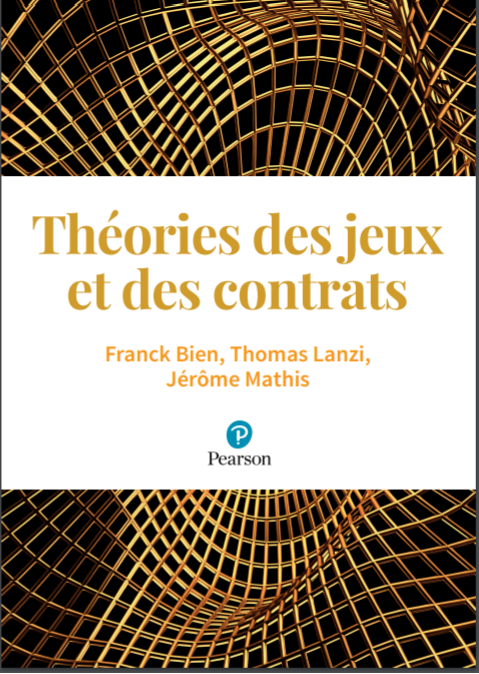Industrial Organization
Exam 2024-25 | Solution Exam 2024-25
Bibliography (Scientific Articles)
Abreu, D., P. Dutta and L. Smith (1994) "The Folk Theorem for Repeated Games: A NEU Condition," Econometrica, 62(4), 939-948.
D'Aspremont, C., Gabszewicz, J., & J.-F. Thisse. (1979). On Hotelling's "Stability in Competition". Econometrica, 47(5), 1145-1150.
Aghion, P., N. Bloom, R. Blundell, R. Griffith, and P. Howitt. (2005). "Competition and Innovation: An Inverted-U Relationship," Quarterly Journal of Economics, 120, 701-728.
Alesina, A., Ardagna, S., Nicoletti, G., & Schiantarelli, F. (2005). Regulation and investment. Journal of the European Economic Association, 3(4), 791--825.
Berry, S., & Waldfogel, J. (1999). Free Entry and Social Inefficiency in Radio Broadcasting. The RAND Journal of Economics, 30(3), 397-420.
Bertrand, J. (1883) Review of “Theorie mathematique de la richesse sociale” and “Recherche sur les principes mathématiques de la théorie des richesses”. Journal des Savants, 499-508.
Cournot, A. A. (1839): “Principes Mathématiques de la Théorie des Richesses,” Paris.
Dastidar, K. G. (2011). Bertrand equilibrium with subadditive costs. Economics Letters, 112(2), 202-204
Blackwell, D. (1965), "Discounted Dynamic Programming," Annals of Mathematical Statistics 36, 226--235.
Brander, J. A., and B. J. Spencer. "Strategic Commitment with R&D: The Symmetric Case." The Bell Journal of Economics 14, no. 1 (1983): 225--35.
Davidson, C., & Deneckere, R. (1986). Long-Run Competition in Capacity, Short-Run Competition in Price, and the Cournot Model. The RAND Journal of Economics, 17(3), 404-415.
Flath, D. (2012). Are there any cournot industries in Japan? The Japanese Economy, 39, 3-36.
Friedman, J. (1971), "A non-cooperative equilibrium for supergames", Review of Economic Studies 38 (1): 1—12
Fudenberg, Drew; Maskin, Eric (1986). "The Folk Theorem in Repeated Games with Discounting or with Incomplete Information". Econometrica 54 (3): 533.
Gabszewicz, J. & Thisse, J. -F. (1979): "Price competition, quality and income disparities," Journal of Economic Theory, vol. 20, issue 3, pages 340-359
Gabszewicz, J. & Thisse, J. -F. (1980): "Entry (and exit) in a differentiated industry," Journal of Economic Theory, vol. 22(2), pages 327-338.
Gilbert, R. and Newbery, D. (1982). "Preemptive Patenting and the Persistence of Monopoly," American Economic Review, 72: 514-526
Green, E. and R. Porter (1984), "Non-Cooperative Collusion under Imperfect Price Information," Econometrica, 52:87-100.
Haltiwanger, J. and J. Harrington (1991), "The impact of cyclical demand movements on collusive behavior," Rand Journal of Economics, 22:89-106.
Hahn, F. (1962). The Stability of the Cournot Oligopoly Solution. The Review of Economic Studies, 29(4), 329-331.
Hotelling, H. (1929). Stability in Competition. The Economic Journal, 39(153), 41-57.
Kreps, David M., and Jose A. Scheinkman. 1983. "Quantity Precommitment and Bertrand Competition Yield Cournot Outcomes." Bell Journal of Economics 14, no. 2 (Autumn): 326--37.
Leahy, D., & Neary, J. P. (1997): "Public Policy Towards R&D in Oligopolistic Industries." American Economic Review, 87(4), 642--662.
Madden, P. (1998). Elastic demand, sunk costs and the Kreps--Scheinkman extension of the Cournot model. Economic Theory 12, 199--212
Okuno-Fujiwara, M., and K. Suzumura, 1990. "Strategic Cost-Reduction Investment and Economic Welfare," Discussion Paper Series
Porter, R. (1983), "A Study of Cartel Stability: The Joint executive Committee, 1880-1886," Bell Journal of Economics, 14: 301-314.
Rotemberg, J., and G. Saloner (1986), "A Supergame-Theoretic Model of Business Cycles and Price Wars during Booms," American Economic Review, 76:390-407.
Salop, S. (1979). Monopolistic Competition with Outside Goods. The Bell Journal of Economics, 10(1), 141-156.
Schultz, C. (2004): "Market transparency and product differentiation," Economics Letters, 83(2), 173-178.
Shaked, A. and J. Sutton (1982): "Relaxing Price Competition through Product Differentiation," Review of Economic Studies, 49, pp.3-13.
Shaked, A. and J. Sutton (1983): "Natural Oligopolies," Econometrica, 51, pp.1469-83.
Sovinsky, M. "Do Research Joint Ventures Serve a Collusive Function?", Journal of the European Economic Association, Volume 20, Issue 1, February 2022, Pages 430--475
Spence, M. 1984. "Cost Reduction, Competition, and Industry Performance," Econometrica, vol. 52(1), pages 101-21.
Bibliography (Books)
Belleflamme, P., & Peitz, M. (2015). Industrial organization: markets and strategies. Cambridge University Press.
Cournot, A. (1838) : « Principes Mathématiques de la Théorie des Richesses, » Paris: 1838 English translation: (N. Bacon, trans.), Researches into the Mathematical Principles of the Theory of Wealth, New York: Macmillan & Company, 1897.
Fudenberg, D. and J. Tirole (1998): “Game Theory”, The MIT Press
Mailath, George J. and Larry Samuelson (2006): "Repeated Games and Reputations", Oxford University Press.
Myerson, Roger B. (1991): “Game Theory: Analysis of Conflict,” Harvard University Press
Osborne, Martin J. (1994): “A Course in Game Theory”, The MIT Press
Stackelberg, Heinrich Freiherr von (1934): Marktform und Gleichgewicht (Market Structure and Equilibrium), 2011, Translated by Bazin, Damien, Hill, Rowland, Urch, Lynn Vienna, 1934
Tirole, Jean. (1988): “ The Theory of Industrial Organization”. Cambridge: MIT Press.


